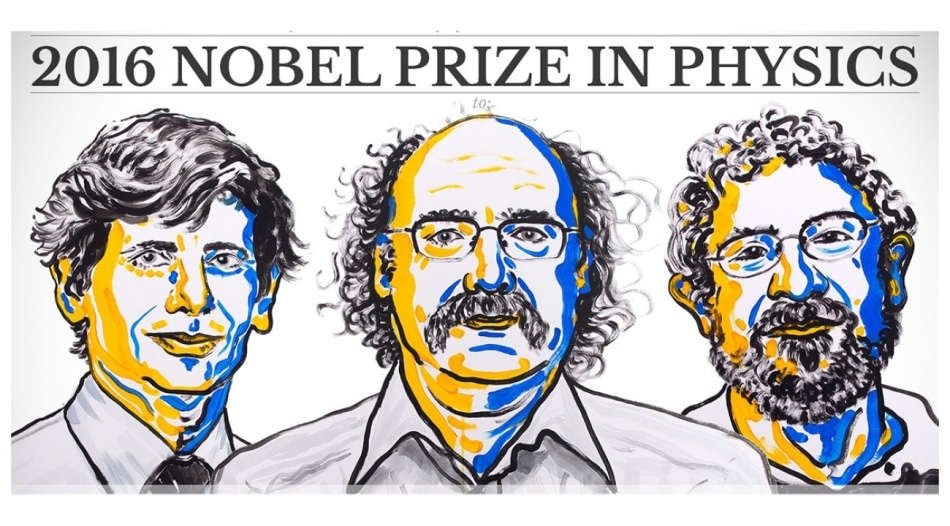Oct 5 2016
A trio of researchers who laid the foundation for understanding numerous exotic phases of matter have split the 2016 Nobel Prize in Physics.
 Credit: nobelprize.org
Credit: nobelprize.org
The Royal Swedish Academy of Sciences awarded the prize "for theoretical discoveries of topological phase transitions and topological phases of matter" to three laureates: David Thouless of the University of Washington, Duncan Haldane of Princeton University and Michael Kosterlitz of Brown University.
The research behind the prize "illustrates, in a very nice way, the interplay between physics and mathematics," said Thors Hans Hansson, a physicist who introduced the mathematics behind the prize at the announcement ceremony using a cinnamon bun, a bagel and a pretzel.
Topology is the branch of mathematics that offers a coarse distinction between those three baked goods, often capturing differences by counting the number of holes that different objects have. In topology, a bagel and a pretzel are fundamentally different because there is no way to add more holes to a bagel without tearing the dough and reshaping it.
The application of topology to physics was a revelation in the late 1970s and 1980s. Many puzzling behaviors defied explanation until topology was considered. For example, experiments on thin materials subjected to low temperatures and enormous magnetic fields exhibited an odd behavior. Instead of their electrical current changing continuously as a magnetic field varied, it made discrete jumps. Now known as the quantum Hall effect, this behavior arose from the topological properties of electrons in the material. When confined to two dimensions and subjected to extreme conditions, the quantum behavior of electrons can get knotted up in topologically distinct ways. This realization explained where the jumps in current occurred and why they were stable even when samples were less than pristine.
Many researchers at JQI, CMTC (link is external) and CNAM (link is external) take advantage of the interplay between topology and physics, using it to guide light in novel ways or study how to build a quantum computer. They've even extended some of the early work by Thouless to create a quantum pump.
More on topology
All materials are composed of the same basic stuff—atoms and their electrons. Atoms come in at least 118 different types, giving rise to enormous variation in material properties. For example, aluminum conducts electricity; add some oxygen and you get insulating aluminum oxide. One is shiny; the latter is whitish and dull.
Just like changing the kind of atoms in a material alters its properties, topological differences can lead to vastly different physical phenomena.
The common analogy to clarify the meaning of topology is the comparison of a bagel to a muffin. The distinction is that a bagel cannot be deformed into a muffin without removing the hole. However, a bagel can be deformed into a coffee cup and is therefore topologically equivalent.
In the language of condensed matter physics, insulators and conductors have energy diagrams that cannot be deformed into one another without opening or closing gaps. Just like removing the hole from the bagel makes it a muffin, here the band structure must fundamentally change to go from insulator to conductor.
The effects of topology can extend beyond geometric classification. Physical states characterized by their topology can survive in the presence of disruptions. Topology offers this protection because it is a global aspect of the system. Adding raisins to the bagel does not remove its defining quality—the hole in the middle.
Source: http://jqi.umd.edu/